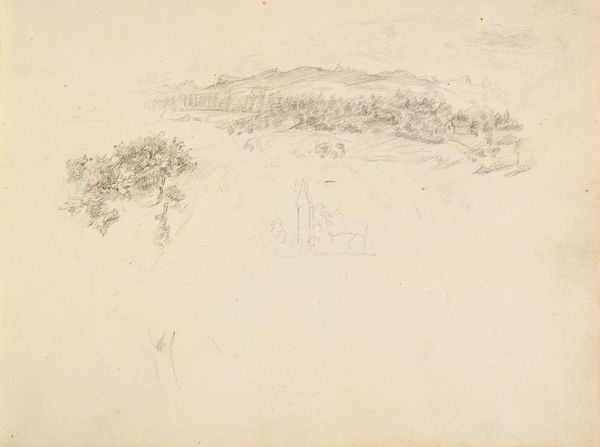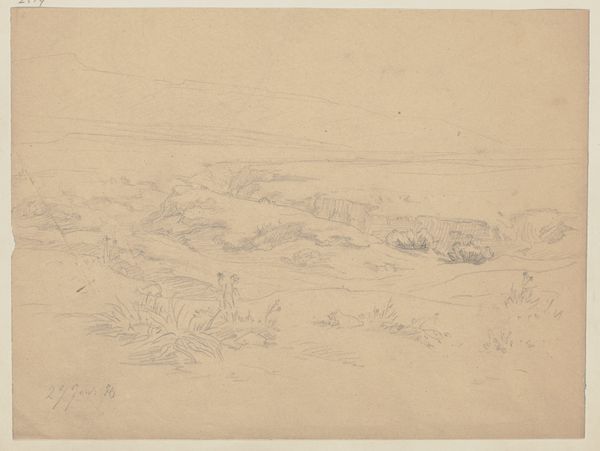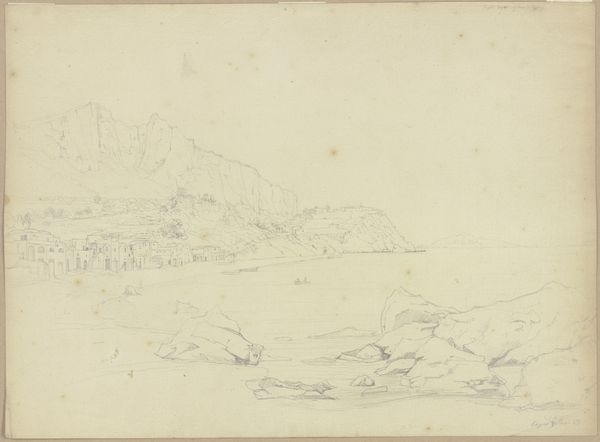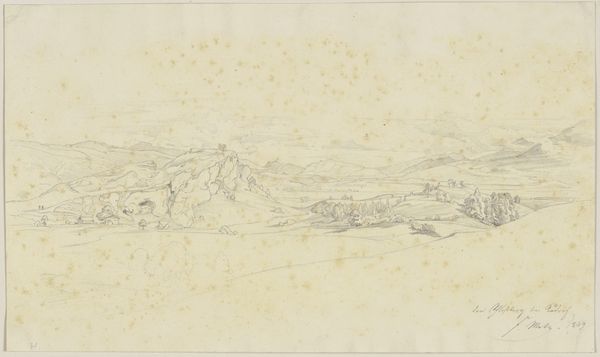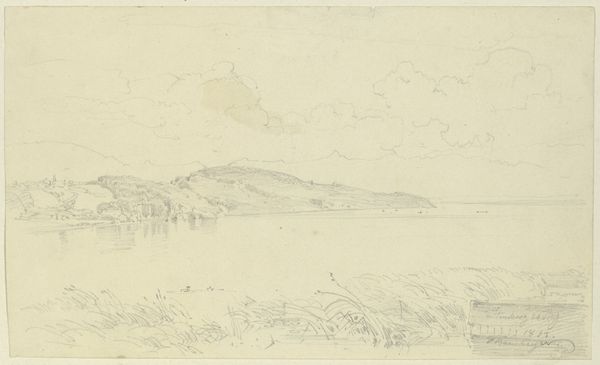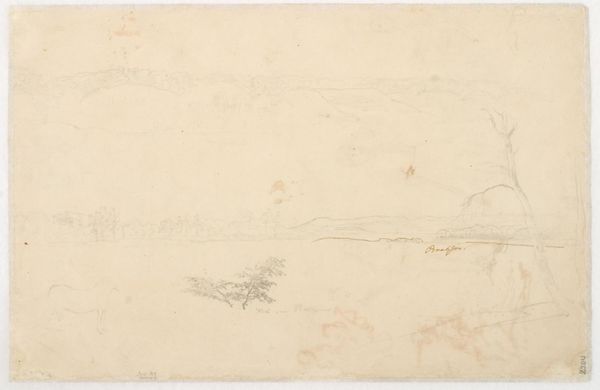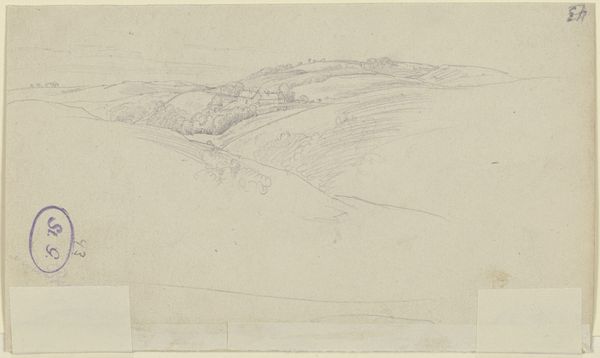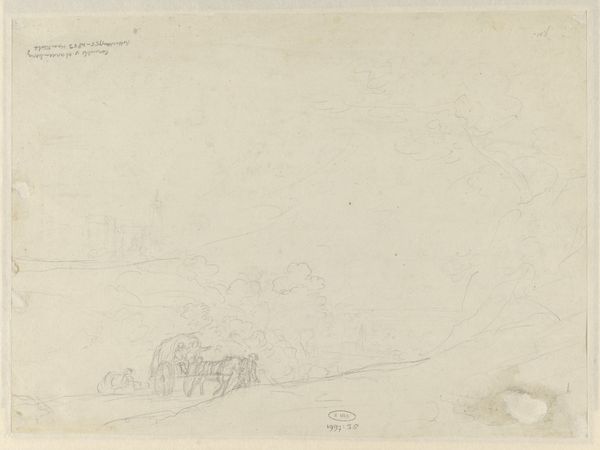
drawing, paper, pencil
#
drawing
#
landscape
#
paper
#
romanticism
#
pencil
Dimensions: 226 mm (height) x 353 mm (width) (bladmaal)
Curator: Ah, yes, here we have Dankvart Dreyer's pencil drawing, "Kysten ved Bovbjerg," or "The Coast at Bovbjerg," from 1843. Look closely, it's quite delicate, isn't it? Editor: Eerily so. I feel a chill just looking at it, like the land itself is exhaling. Is it just me, or is there something unfinished, almost ghostly about this sketch? Curator: Perhaps that's intentional? The Romantic artists were often drawn to the sublime, the overwhelming power of nature, and sketches allowed for capturing fleeting moments and emotional states, like half-formed thoughts. Dreyer made this piece with pencil on paper, a practical and lightweight choice for en plein air sketching, common among landscape artists like him. Editor: Good point! It certainly carries the mark of transience, perfect for Romanticism! And look how spare the landscape is; it suggests loneliness but also vastness. I’m curious how landscape artists used drawings like this within their larger practice. Curator: Landscape drawings of the time acted as documents, souvenirs and sources of inspiration. They allow one to closely study and document geographical and geological structures, local fauna and atmospheric qualities like light and shadow. A number of landscape painters, like Dreyer, actually circulated through the country as part of study tours supported through royal stipends. Editor: And that gives me a very specific image of the artist at work—wandering a bit, contemplating the infinite! One part field study, and one part melancholic vision, that's the sweet spot. Curator: Indeed. Notice the inclusion of vegetation on the rock in the foreground, maybe an early form of ecocriticism? And if we consider the broader context, the first half of the 19th century saw an increase in landscape painting, driven in part by rising national sentiment. Artists used landscape as a vehicle for visualizing national identity and unique local cultural values. Editor: How brilliant that something that feels so light, a breath on paper, can carry the weight of history and a whole nation’s longings. Curator: Absolutely, this landscape is less about geographical accuracy and more about constructing a feeling of connection to place and heritage. It goes to show that there’s always more to see. Editor: Thanks. I feel ready to go outside and contemplate!
Comments
No comments
Be the first to comment and join the conversation on the ultimate creative platform.

